Finding solutions to the biggest challenges faced during drug substance development relies on properly integrating analytical and production expertise
A crucial trait of any successful drug substance developer is the ability to solve difficult problems. The pharmaceutical industry is now facing greater challenges than ever before, caused by the influx of complex compounds identified during drug discovery. Contract development and manufacturing organisations are increasingly being sought to consult on or investigate solutions to these challenges and enable new ways to rapidly bring drugs to the marketplace. At Arcinova, our experts work as detectives in drug development – investigating alternative process scenarios and solving challenges related to scalability, efficiency and economy. By integrating scientific knowledge with cutting-edge technology, we are able to solve our clients’ complex, multi-dimensional problems.
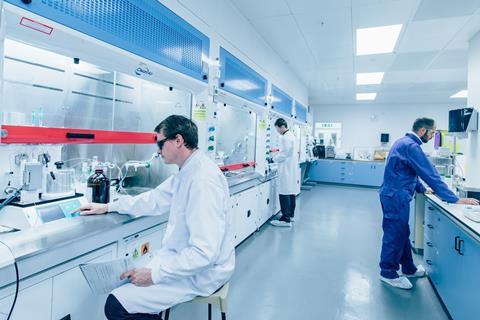
Investigating drug compound fate
Pharmacokinetics is the study of how drug compounds move within the body. It is often combined with metabolic pathway determination – how the body breaks down the drug compound into intermediate products called metabolites – to understand how a drug is transformed within a biological system. Metabolic and pharmacokinetic studies are used in early drug development to identify optimal dosage and dose intervals. Determining the metabolic and pharmacokinetic profile enables clarification of the drug compound elimination route, major metabolic pathways and the contribution of metabolites. Finding out whether a drug is metabolised into other compounds with different levels of toxicity is also vital during early-stage drug development.

Radiolabelling is a vital tool for this. It involves replacing a carbon atom in the drug compound with a carbon-14 isotope to create a chemically identical version of the drug with a quantifiable radioactive element. The total recovered amount of the parent drug and metabolites is deduced from the mass balance, which is calculated as the difference between the administered dose and the remaining dose that is excreted.1 Though the mass balance study determines the amount of drug-related substance recovered, it does not provide structural information on impurities or metabolites. To achieve this, other analytical methods need to be employed.
Investigations are required across the development and validation stages to identify unknown impurities and metabolites. Metabolites can be structurally analysed using high-resolution mass spectrometry and high-field NMR. With the latest technology, metabolite structures can be determined from only 20–30ng of sample, enabling scientists to examine impurities that are present even at ultra-low concentrations. This dual use of mass spectrometry and NMR provides essential clues to help identify the structure and origin of the contaminant or metabolite. Scientists can then develop a clearer understanding of what is happening to a drug molecule as it progresses through the body.
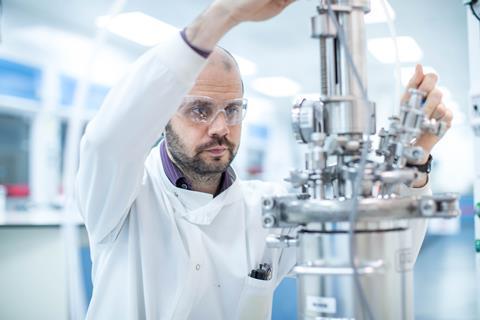
Solving scalability challenges
Throughout drug substance development it is important to quickly identify potential challenges and develop solutions to reduce the risk of downstream delays. It is essential to develop processes that are well-defined and controlled. One important process consideration is reaction scalability. In particular, it is essential to understand how parameters will change as drug development moves from the lab to a pilot plant scale. For this reason, comprehending the underlying chemistry is vital to developing strong knowledge of process scalability. Reducing problems during scale-up also requires chemical engineering and process chemistry expertise, to help optimise all of the engineering and physical parameters of a process.
One of the more frequent issues encountered during scale-up is the change in the drug compound’s polymorphic form. It is important to ensure that only the desired polymorph is produced, because changes to the solid-state structure can significantly impact the quality and consistency of the final dosage form.2 Understanding a drug’s solid state requires thorough investigation into its propensity to form different polymorphs and the conditions that cause it to change from one to another. Because polymorphs share an identical chemical composition but different crystalline structures, polymorph screening is used to determine the optimal solid state for formulation and manufacture. This involves recrystallising the drug compound under various conditions to determine the different thermodynamic and kinetic solid products that can occur. Technology will continue to play an important role in polymorph identification, with computational modelling narrowing the field of possible polymorphs and acting as a predictive tool for choosing appropriate solid-state formulations. However, physical crystallisation screening is still an essential resource that provides important data for controlling the solid form during scale-up, formulation and manufacture.3
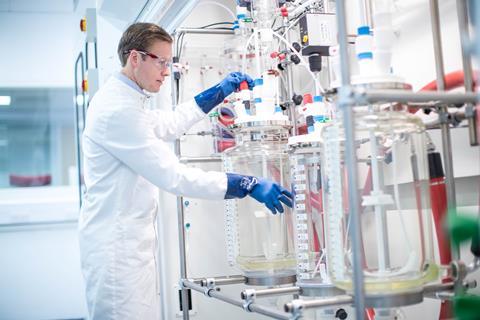
Investigating physical forms
Problems around physical form need to be resolved during the drug substance manufacturing stage. As more complex compounds are being identified in drug discovery, the application of both analytical science and formulation development is required to efficiently produce a drug substance product. Solvent screening is a useful tool for finding the best choice of solvent and determining whether this will compromise other process factors. For example, the most appropriate solvent may slow down the rate of reaction, requiring remedial action such as an increase in temperature. Solubility studies are also essential for determining the effect temperature may have on the dissolution of precise concentrations of compounds. To achieve this, scientists use dynamic vapour sorption, which can quickly measure how much of a solvent is absorbed by a sample, which also provides more evidence of physical form.
It is also important to understand whether a material is crystalline or amorphous due to the differing characteristics associated with each structure type. Crystalline solid-state forms are more stable but display lower solubility than amorphous forms.4 Solid-state services are responsible for providing information on material structure and include x-ray powder diffraction to distinguish between crystalline and amorphous compounds.
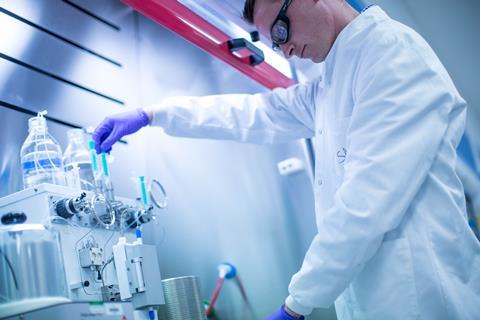
Improving speed and efficiency
Time and cost are both important factors to consider during the drug development process, leading us to investigate new methods for increasing speed and efficiency. The scientists at Arcinova determine how a process can generate kilograms of a drug substance in the shortest possible time and to align with current manufacturing capacity. The use of synthetic biology is one area that Arcinova is exploring to reduce the number of process steps during drug substance development.
Historically, if a chemist wanted to make compound H, they would have to go from starting material A through intermediates B, C, D, E, F, and G before creating the desired compound. Synthetic biology can harness the infrastructure within nature to produce drug compounds more efficiently from a different start point. This could mean starting at M and going backwards – through L, K, J and I – and getting to H through this quicker, alternative route. Different pathways may be integrated inside a single biological host to produce a high-value advanced intermediate that can be purified. Using synthetic biology requires greater knowledge of the metabolic pathways found in nature, which can then be combined with expertise in chemistry to determine the most useful synthetic pathways.5
Faster drug substance development can also be produced by deducing optimum process parameters. The innovative use of real-time and controlled systems analysis enables the automatic adjustment of parameters to optimise a process. It is becoming more common to integrate analytical and process chemistries to develop a closed-loop manufacturing process. For instance, Fourier-transform infrared spectroscopy probes can provide real-time analytical data, which is then used to identify the optimal reaction conditions. Defining the best temperature, pressure and solvent flow rate helps to quickly reach a scalable solution without the need for multiple screening reactions.
The team at Arcinova understands the importance of collaboration to investigate and solve complex drug development challenges, for increased scalability, efficiency and economy. Bringing experts together on one site enables effective solutions to multi-dimensional pharmaceutical problems. It is rare to have scientists with a diverse range of specialities working together in the same laboratories, on the same project, at the same time. This collaborative approach also ensures that there is no delay between discovering a problem and having scientists identify a solution, leading to faster and more efficient drug development.
Gareth Jenkins is chief scientific officer and Paul Quigley is head of drug substance at Arcinova
References
1 R J Roffrey et al,Drug Metabol. Rev., 2008, 39, 7 (DOI: 10.1080/03602530600952172)
2 A Newman and R Wenslow,AAPS Open, 2016, 2, 2 (DOI: 10.1186/s41120-016-0003-4)
3 A J Florence, Eur. Pharm. Rev., 2010 https://bit.ly/2IIdMHj
4 S B Murdande et al,Pharm. Dev. Technol., 2011, 16, 187 (DOI: 10.3109/10837451003774377)
5 D T Erikson et al, Synth. Biol.: Tools Appl., 2013, 3, 43 (DOI: 10.1016/B978-0-12-394430-6.00003-0)

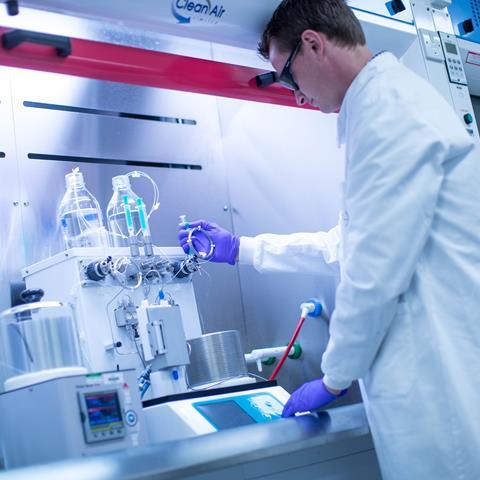















No comments yet